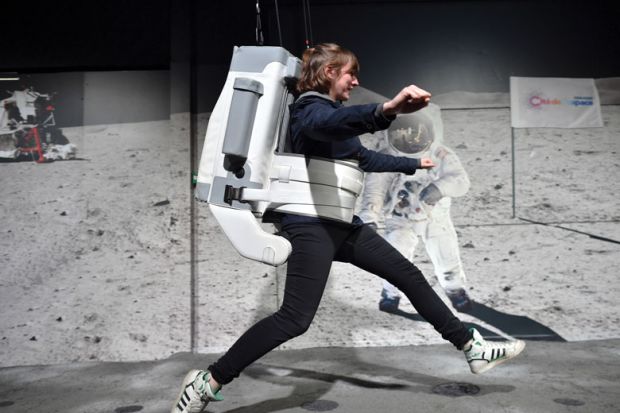The top two US science funding agencies are nearing the finish line on creating new divisions they expect will usher in new generations of more entrepreneurial researchers – and universities that encourage them.
With its enabling legislation drawing close in Congress, the National Institutes of Health is looking to adopt some of the oft-replicated ideals of the Defense Advanced Research Projects Agency, or Darpa, which is known for placing large financial bets on fledgling ideas and hoping for spectacular if unlikely breakthroughs.
The National Science Foundation, meanwhile, has won lawmaker approval for a new division of Technology, Innovation and Partnerships, or TIP, that it sees as having some Darpa-like characteristics but is more fundamentally aimed at stimulating academic-business teamwork in cities and regions across the US.
The US university community is largely cheering them on, recognising that fusing academic science more tightly to real-world outcomes may yield both societal improvement and stronger patterns of financial backing.
“It’s going to shake up the way people will start to behave,” the NSF’s director, Sethuraman Panchanathan, a former chief research and innovation officer at Arizona State University, said of TIP.
Such talk has long been a feature of federal grant-writing agencies. Congress, however, is now approving real structural changes to implement those ideals. It is a big bet on the value of synergistic efficiencies, at the risk of future budgetary stresses leaving the world’s long-time model for university-led innovation stuck exploiting its past laboratory discoveries rather than generating new ones.
“We see this being additive,” said Matthew Owens, vice-president for federal relations at the Association of American Universities.
Yet across those universities, he acknowledged some concern. In terms of the new NSF division, Mr Owens said, the chief concern was protecting resources for the agency’s existing mission. “We’re hopeful that funding will take into account this initiative,” he said. As for medical research, “there is quite a bit of excitement and support about the potential for new Darpa-like vision”, Mr Owens said. “While there are some questions that will need to be addressed to bring everyone on board with this, I don’t think those are insurmountable.”
The current federal budget situation could be compounding the unease. After several years of granting robust improvements in research spending, Congress just set the fiscal year 2022 increases at levels below the rate of inflation. The NSF got a 4 per cent boost to $9 billion (£7 billion), leaving little for its TIP expansion. NIH funding gained 5 per cent to $45 billion, including $1 billion for the Arpa-H – a fraction of the $6.5 billion sought by the Biden administration.
The NIH already has a decade-old division, the National Center for Advancing Translational Sciences, or Ncats, that works to convert lab breakthroughs into medical products. But former NIH director Francis Collins has argued that Arpa-H would take a far more holistic approach, focusing on broad societal challenges to public health. Examples, he has said, include fighting cancers not just with medical tools but through projects that address racial and income-based inequities.
Dr Panchanathan has a similar outlook. He described TIP as being modelled on cases such as Pittsburgh, where top universities worked with companies and local leaders to create a vibrant robotics industry. NSF hopes through TIP to stimulate similar academic-business-political conversations in communities across the US – identifying local expertise that can be ramped up, thereby creating a discovery-exploitation feedback loop where science fuels commercial development that then informs new scientific pursuits.
That means expanding notions of what it means to be a scientist, with more flexible academic-corporate boundaries, Dr Panchanathan told Times Higher Education.
“You’re seeding a new culture,” Dr Panchanathan said. “This big wall that is there between academia and industry will start to become much more fuzzy.”
Register to continue
Why register?
- Registration is free and only takes a moment
- Once registered, you can read 3 articles a month
- Sign up for our newsletter
Subscribe
Or subscribe for unlimited access to:
- Unlimited access to news, views, insights & reviews
- Digital editions
- Digital access to THE’s university and college rankings analysis
Already registered or a current subscriber? Login











